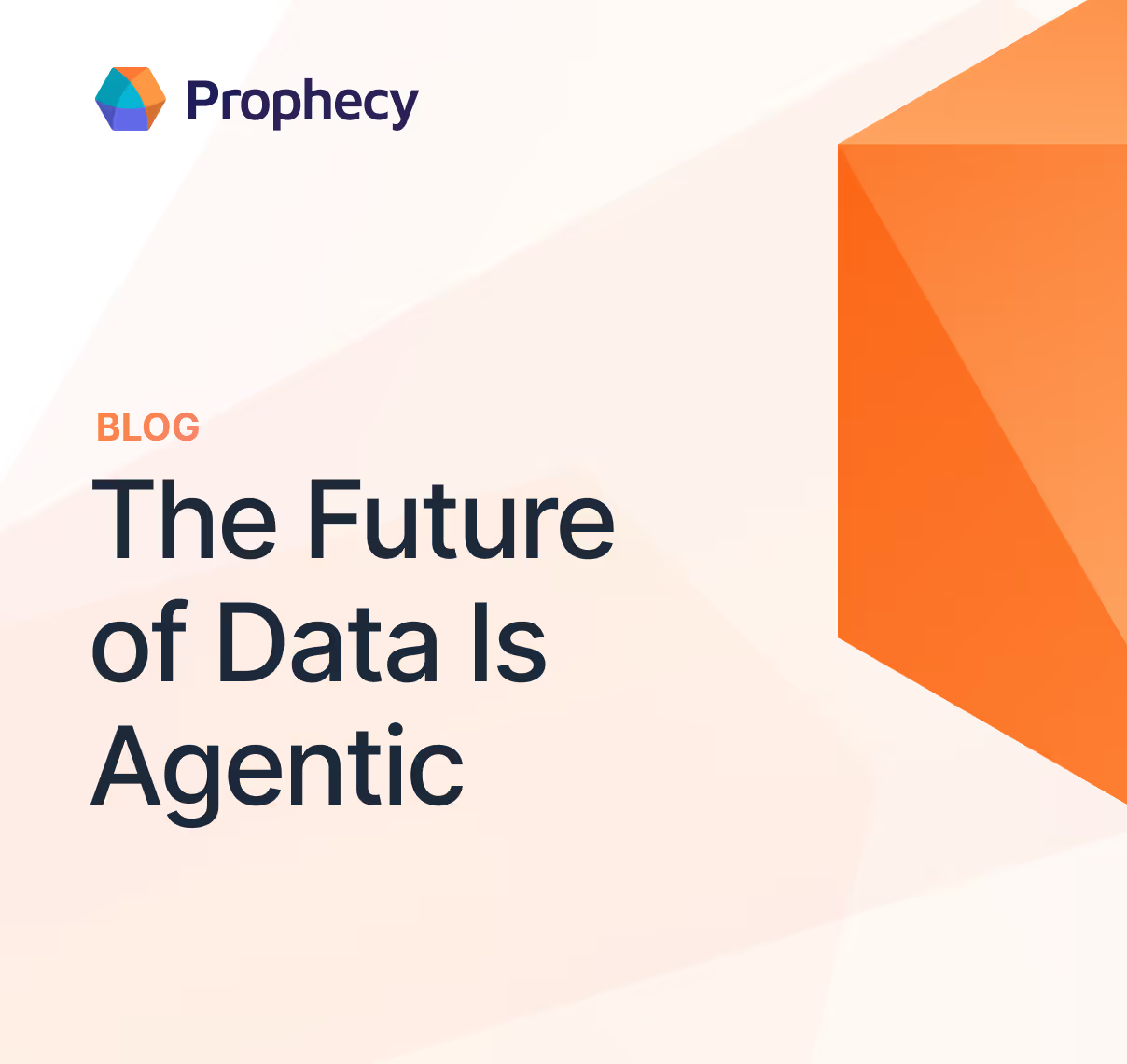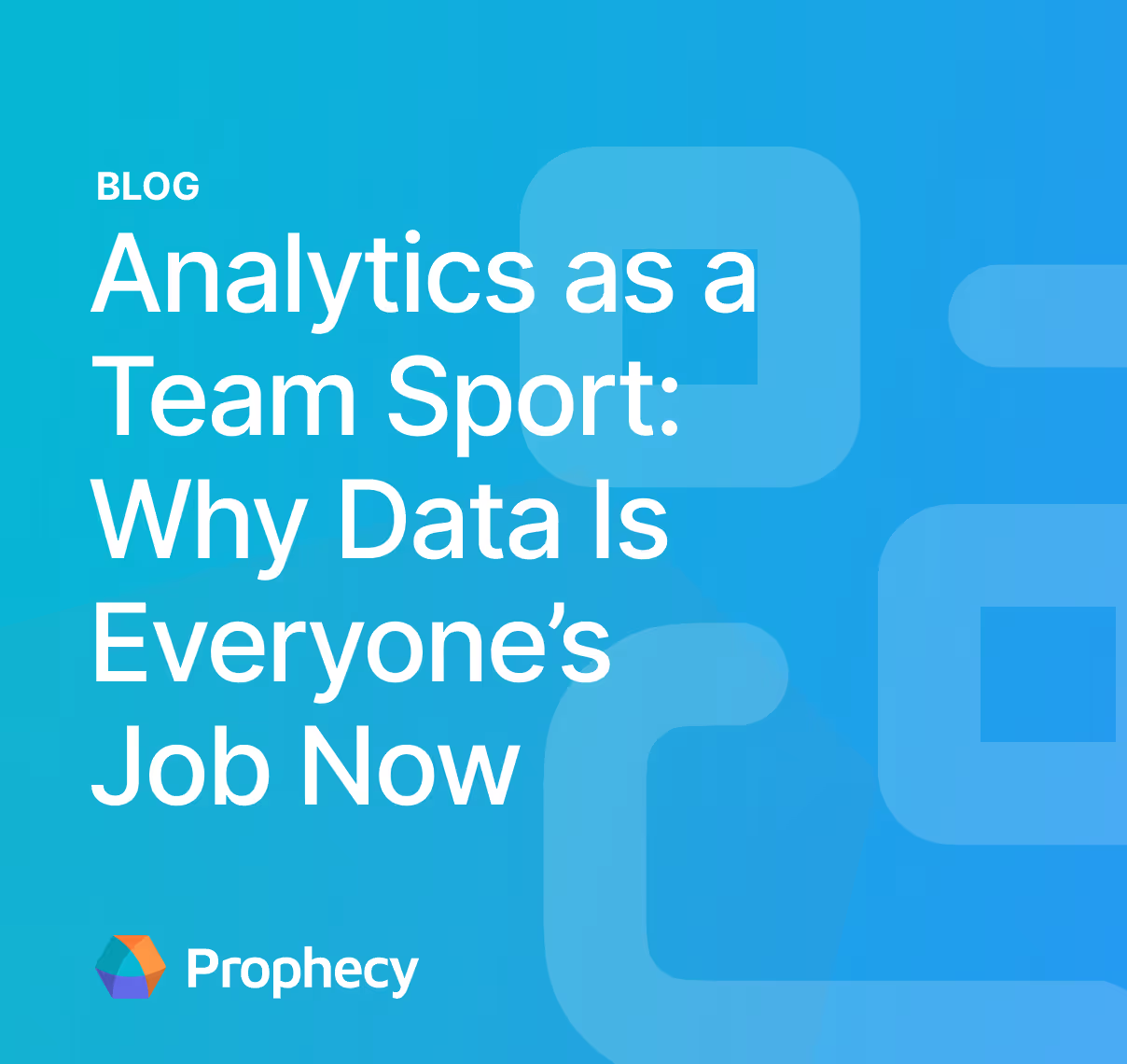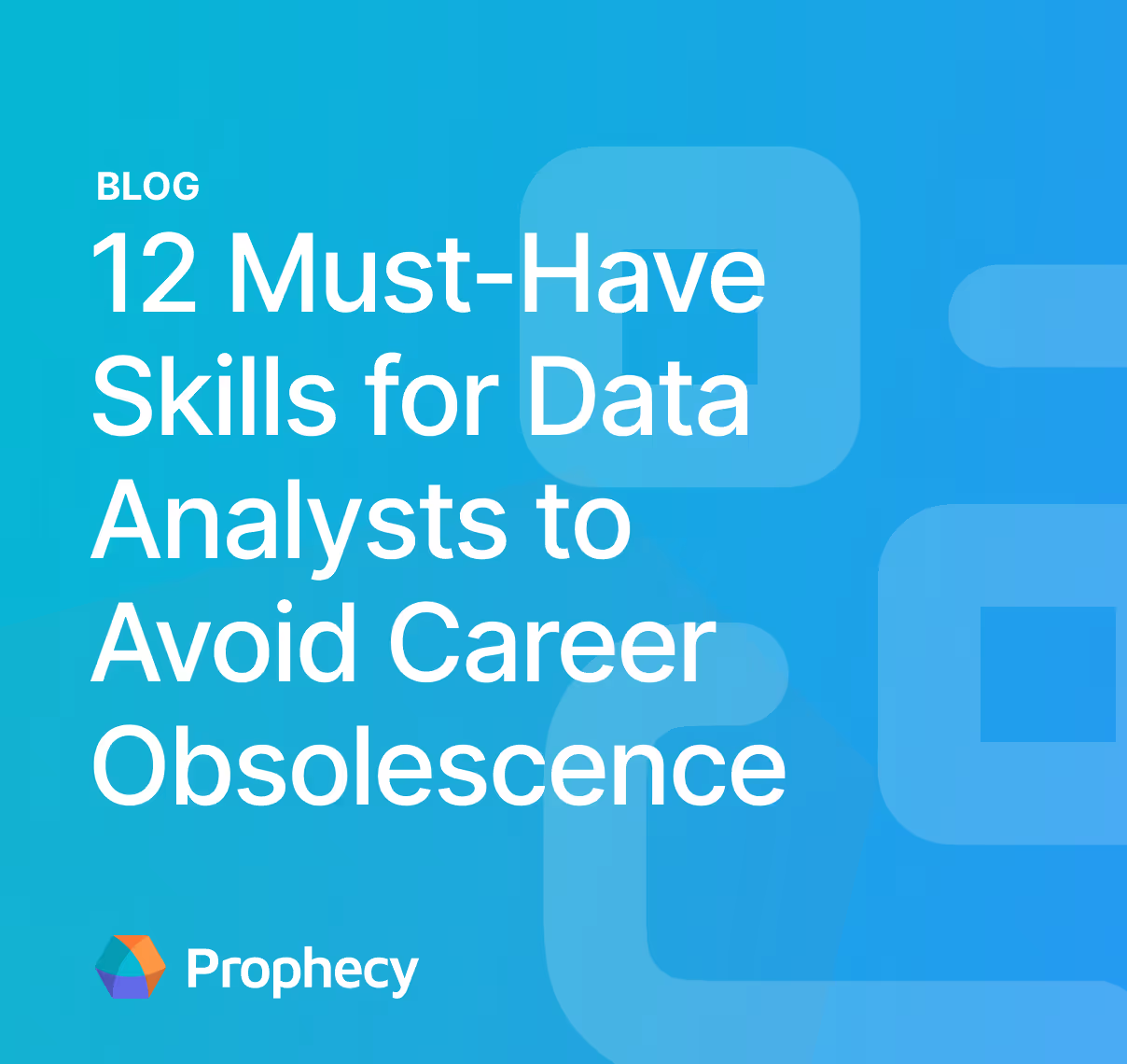9 Things You Need to Deliver Self-Service Analytics With AI Agents
Explore essential strategies for AI-driven self-service analytics, including AI-enabled tools, data integration, governance, multi-level UIs, and automation.
The promise of self-service analytics has always been compelling: empower your business users to get the insights they need without constantly bothering your data team.
But traditional self-service tools often fall short, requiring users to learn complex interfaces and still leaving them dependent on technical experts for anything beyond basic queries. AI agents are changing this dynamic entirely, offering a natural language interface that can democratize data access.
However, successfully implementing AI-powered self-service analytics isn't as simple as plugging in a chatbot and calling it a day. You need a thoughtful approach that addresses everything from your underlying data infrastructure to how you'll manage organizational change.
The companies that get this right will unlock unprecedented levels of data literacy across their organization.
1. AI-enabled analytics tools
You can’t just take any existing analytics tool and slap AI agents onto it—AI needs to be natively supported by the tool for it to function effectively. Tools designed specifically for AI-driven analytics have the architecture and capabilities required to handle the complexity of machine learning models, natural language processing, and automated decision-making. These tools ensure that AI agents can analyze data, generate insights, and automate tasks without human intervention, all within a user-friendly, self-service environment.
When you use AI-enabled analytics tools, you're setting up a system where both the AI agents and the users can interact within a cohesive platform. The AI doesn’t just exist as an add-on; it’s baked into the way the tool operates, allowing business users to access powerful AI features without needing deep technical knowledge. This seamless integration is what makes self-service analytics with AI agents not only possible but also effective at scale.
2. Data infrastructure and integration
The backbone of any effective analytics strategy is robust data infrastructure. Self-service analytics with AI agents is only possible when data is well-organized and easily accessible. This means having a unified data infrastructure that consolidates information from various sources into a single view.
Your data infrastructure must also support seamless integration with both internal and external data systems. Whether you’re pulling data from cloud databases (like Databricks, Snowflake, or BigQuery), on-premise servers, or third-party APIs, the integration must be smooth to ensure that your analytics tools have the right data at the right time. An efficient integration layer can help eliminate data silos and provide a consolidated view, which is essential for accurate and actionable insights.
3. Enterprise-grade governance
When integrating AI agents into self-service analytics, governance becomes even more critical. AI agents can automate data transformations, generate insights, and interact with data across the organization, making it essential to ensure that data remains secure, compliant, and trustworthy. Strong governance ensures that AI agents function within established boundaries, promoting accountability and security without restricting the flexibility that AI agents can provide.
Your governance framework needs to address both technical and organizational challenges. On the technical side, you need granular access controls that can restrict not just which data sources users can query, but also which specific fields, time ranges, and aggregation levels they can access. The AI should understand these permissions and gracefully handle requests that would violate them, explaining why certain data isn't available rather than simply failing.
Essential governance components for AI agents in analytics include:
- Role-based access control to ensure that the right people have access to the right data
- Data lineage tracking for full transparency over data transformations and usage
- Audit logging that captures who asked what questions and when
- Data classification systems that automatically tag sensitive information and apply appropriate handling rules
- Approval workflows for queries that access highly sensitive data
- Data retention policies that automatically manage how long query histories are stored
4. Multi-level user interfaces
When adding AI agents to self-service analytics, a multi-level user interface (UI) is crucial for ensuring that both business and technical users can interact effectively with the system. AI agents introduce advanced capabilities that require different levels of engagement, so having a UI designed for varying user needs becomes essential for success. These AI agents help automate tasks and generate insights, but for them to be truly effective, the interface must cater to different levels of expertise within the organization:
- Business users: General business users need an interface that’s simple and intuitive. It should allow them to ask questions, explore data, and generate reports using natural language queries or easy-to-use dashboards, all without needing to understand the technical intricacies of the data. The AI agent can assist by interpreting these queries and automatically generating insights or visualizations.
- Technical users: Data scientists or analysts require a more advanced interface that offers deeper control over the analytics process. They need access to the raw data, the ability to fine-tune machine learning models, and the option to write custom queries. The AI agent here can serve as an assistant, helping these users automate repetitive tasks, identify patterns, and optimize models.
By implementing a multi-level UI, businesses ensure that AI agents are accessible to all users, regardless of their technical expertise, and that the analytics process is streamlined and efficient.
5. End-to-end automation
For AI agents to be effective in self-service analytics, the entire workflow—from data collection to insights generation—needs to be automated. This ensures that data is always up-to-date, consistent, and ready for analysis, allowing business users to access reliable information in real time without waiting for IT or data engineering teams. Automation also enables AI agents to continually learn and adapt, improving over time and reducing the potential for human error.
When you integrate end-to-end automation with AI agents, you create a streamlined process that supports faster, data-driven decision-making at scale. This not only enhances operational efficiency but also empowers users to independently explore data, generate insights, and make decisions—without being slowed down by manual tasks.
6. Data-quality safeguards
AI agents amplify both the benefits and risks of your data quality. When your data is clean and reliable, AI can democratize access to trustworthy insights across your organization. But when data quality issues exist, AI agents can quickly spread incorrect information to many users who may not have the technical background to spot problems. This makes robust data quality safeguards absolutely essential for any AI-powered self-service platform.
Additionally, your approach to data quality needs to be proactive rather than reactive. Instead of waiting for users to discover problems, your system should continuously monitor data sources, validate incoming information, and flag potential issues before they impact analyses. The AI agents themselves should be trained to recognize common data quality problems and either automatically correct them or alert users when results might be unreliable due to data issues.
Must-have data quality safeguards include:
- Schema validation to catch structure changes that could break downstream logic
- Null and anomaly detection to identify missing or out-of-range values
- Volume checks to detect unexpected spikes or drops in data
- Freshness monitoring to ensure data isn’t stale or out-of-sync
- Business rule validation to confirm that the data aligns with expected logic and outcomes
7. Production-ready deployment
Deploying an AI agent in a sandbox environment is one thing, but rolling it out across the enterprise is an entirely different challenge. For AI to effectively support daily decision-making at scale, your deployment architecture must ensure production-grade reliability, security, and performance.
This requires integrating AI agents with continuous integration and continuous deployment (CI/CD) pipelines, allowing updates and retraining processes to be versioned and thoroughly tested. It also involves sandboxing experiments to prevent any impact on live environments, maintaining comprehensive logging for auditability, and ensuring that the infrastructure is capable of scaling in response to increased demand.
8. Continuous feedback and improvement
AI agents learn and improve over time, but only if you create systematic processes for capturing feedback and incorporating it into model training and system refinements. Unlike traditional software that remains relatively static after deployment, AI-powered analytics platforms need continuous attention to maintain and improve their effectiveness. User feedback, usage patterns, and accuracy measurements all provide valuable signals for optimization.
Implement multiple feedback channels that make it easy for users to report when the AI misunderstood their question, provided inaccurate results, or missed important context. But don't rely solely on explicit feedback—also monitor implicit signals like which results users ignore, which follow-up questions they ask, and which analyses they export or share with colleagues. These behavioral patterns often reveal gaps in the AI's understanding that users might not explicitly report.
9. Change management plans
Perhaps the most overlooked aspect of AI analytics deployments is change management. Technical success doesn't automatically translate to user adoption, and user adoption doesn't automatically translate to business value. You need deliberate strategies for helping your organization adapt to new ways of accessing data while managing the cultural shifts that come with democratized analytics.
Start by identifying your change champions—users who are both analytically minded and influential within their departments. These early adopters can prove the value of AI-powered self-service analytics and become advocates for broader adoption. Provide them with extra training and support, then leverage their success stories to encourage wider usage. You'll also need training programs that go beyond tool usage to help users ask better questions and interpret results more effectively.
Communication strategy is equally important. You need to clearly articulate not just what the new AI analytics capabilities can do, but why they matter for each user's specific role. Address job displacement concerns directly, emphasizing how AI agents augment rather than replace human analytical capabilities. Create regular forums for sharing success stories and best practices. Most importantly, be patient. Meaningful organizational change takes time, and you'll need sustained leadership support to achieve the cultural transformation that makes self-service analytics truly successful.
Build your AI-powered analytics future with Prophecy
While implementing all nine of these components might seem daunting, you don't have to build everything from scratch. Prophecy offers a comprehensive AI-native analytics and automation platform that brings together many of these essential elements in a single, integrated solution. Our approach combines AI-powered assistance with robust governance features, making it easier for organizations to deliver true self-service analytics without sacrificing control or data quality.
Here's how Prophecy addresses key requirements for AI-driven self-service analytics:
- AI Agent: Prophecy's AI agent transforms natural language requests into actual data pipelines, allowing business users to describe needs in plain English while the AI handles technical implementation. Unlike simple chatbots, this agent understands your data context, suggests relevant datasets, and builds complete analytical workflows for everyone from data engineers to business analysts.
- Visual interface: The platform provides an intuitive drag-and-drop interface that automatically generates native Spark or SQL code, avoiding vendor lock-in while empowering non-technical users. This visual approach makes complex data pipelines understandable across your organization and enables better collaboration between technical and business teams.
- Built-in governance: Prophecy embeds governance directly into development with automated version control, comprehensive testing, and dynamic documentation generation. The platform maintains clear data lineage, enforces access controls, and provides audit trails—all critical for enterprise deployments where governance isn't optional.
- Self-service: The platform enables business users to build, deploy, and monitor their own data pipelines while maintaining alignment with your data architecture and engineering standards. This eliminates costly back-and-forth between business teams and data engineers while ensuring self-service capabilities don't compromise data quality or security.
The right tools require the right teams. Prepare your data team to meet new business expectations in our ebook, Five Dysfunctions of a Data Team.
Ready to give Prophecy a try?
You can create a free account and get full access to all features for 21 days. No credit card needed. Want more of a guided experience? Request a demo and we’ll walk you through how Prophecy can empower your entire data team with low-code ETL today.
Ready to see Prophecy in action?
Request a demo and we’ll walk you through how Prophecy’s AI-powered visual data pipelines and high-quality open source code empowers everyone to speed data transformation
Get started with the Low-code Data Transformation Platform
Meet with us at Gartner Data & Analytics Summit in Orlando March 11-13th. Schedule a live 1:1 demo at booth #600 with our team of low-code experts. Request a demo here.
Related content
A generative AI platform for private enterprise data
Introducing Prophecy Generative AI Platform and Data Copilot
Ready to start a free trial?
Lastest posts

The Future of Data Is Agentic: Key Insights from Our CDO Magazine Webinar

Analytics as a Team Sport: Why Data Is Everyone’s Job Now




